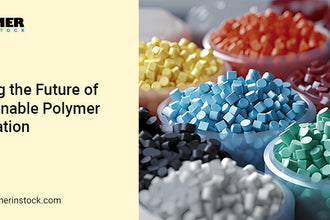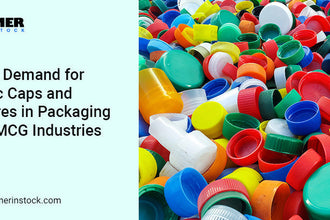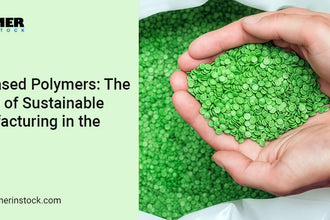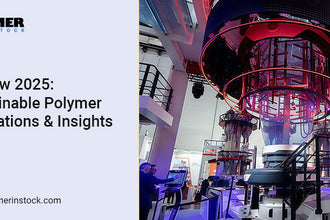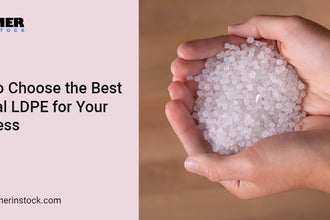
Introduction
Every manufacturer knows that the quality of your material can make or break your product. The wrong plastic can lead to cracks, wasted batches, or extra costs you didn’t plan for. That’s why natural LDPE (Low-Density Polyethylene) is such a reliable choice for so many industries. It’s flexible, lightweight, and surprisingly tough — making it perfect for packaging, molding, and everyday production needs.
But here’s what most people overlook: not all LDPE is created equal. The quality, melt flow, and purity can vary a lot between suppliers. Choosing the best natural LDPE isn’t just about price — it’s about consistency, performance, and long-term value. This blog will help you understand what makes LDPE natural stand out, how to pick the right one, and why it could be the smartest choice for your business.
Why LDPE Natural Works Well
LDPE Natural is light, semi-clear, and surprisingly versatile. Because it’s uncolored and pure, it’s pretty consistent—most of the time.
Reasons Manufacturers Prefer LDPE Natural:
-
It’s flexible: You can stretch it or mold it without worrying about cracks.
-
It’s durable: Tears? Punctures? Not a huge problem.
-
It’s chemical-resistant: It handles detergents and mild acids, which come in handy for industrial use.
-
It’s recyclable: You can reuse it if you need to, which is always a plus.
You’ll usually find it in granules, pellets, films, or sheets, depending on how you plan to use it—molding, extrusion, blow-molding, you name it.

Where You’d Actually Use LDPE Natural
Honestly, it’s everywhere. Here’s how businesses are using it:
1. Packaging
Probably the most common use, LDPE granules is flexible, strong, and easy to handle.
-
Grocery bags
-
Shrink wrap
-
Stretch films
-
Food packaging sheets
2. Industrial Stuff
LDPE isn’t just for packaging. It shows up in:
-
Tubing and pipes
-
Tank liners (ponds, storage)
-
Chemical containers
-
Molded industrial parts
3. Electrical Uses
This one surprises people: LDPE granules is a great insulator. It’s used for:
-
Cable coatings
-
Flexible electrical parts
Granules, Pellets, and Other Forms
Most businesses buy LDPE in granules or pellets. Then, they melt it into films, sheets, or molded parts.
Choosing the right form is super important:
-
Film-grade: Perfect for thin packaging films.
-
Extrusion-grade: Pipes, sheets, molded parts.
-
Injection-grade: Containers, caps, and more solid molded items.
Quick tip: always check the Melt Flow Index (MFI) and density. It might sound technical, but using the wrong batch can make your product look terrible—or jam your machines.
Things to Keep in Mind When Buying LDPE
Here’s a checklist:
-
Know your application. Films, molded parts, and industrial sheets all need different grades.
-
Check quality: Always look at the basics—MFI, density, and certification. And if it’s for food use, double-check that it’s actually food-grade approved. Don’t just take the supplier’s word for it.
-
Choose reliable suppliers: If your LDPE comes late or isn’t consistent, your production line suffers.
-
Don’t pick just based on price: Cheaper batches can cost more in wasted materials and downtime.
-
Think about sustainability: Even natural LDPE can be eco-friendly if sourced responsibly or mixed with recycled LDPE.
Future of LDPE in Sustainable Manufacturing
With sustainability taking center stage, LDPE Natural is finding new life in eco-friendly production.
-
Recyclability and reusability make it a key player in circular economy models.
-
More businesses are blending natural and recycled LDPE for cost-effective green solutions.
-
Innovations in bio-based LDPE are already reshaping the packaging industry.
Common Mistakes People Make
-
Ordering in bulk without testing—huge waste risk.
-
Ignoring supplier reputation—materials might be inconsistent.
-
Focusing only on price—low quality costs more later.
-
Forgetting sustainability—bad for brand image and future regulations.
How to Store and Handle LDPE Natural
Even high-quality LDPE can degrade if not handled properly.
-
Store granules in a cool, dry place, away from sunlight.
-
Keep packaging sealed to avoid moisture absorption.
-
Don’t mix old and new batches unless tested for compatibility.
-
For long storage, maintain the temperature below 40°C to avoid softening.
FAQs About LDPE Natural
1.Can it be recycled?
Ans. Yes, most natural LDPE can be reprocessed into new pellets.
2.Is it food-safe?
Ans. Yes, if it’s certified food-grade.
3.How’s it different from HDPE?
Ans. LDPE is lighter and more flexible; HDPE is stronger and stiffer. Choose based on your product.
4.Forms available?
Ans. Granules, pellets, films, sheets, and molded parts.
5.Which grade should I pick?
Ans. Film-grade for thin films, extrusion-grade for sheets/pipes, injection-grade for molded parts.
Wrapping It Up
At the end of the day, picking the best natural LDPE isn’t just a purchase—it’s a small but important business decision. The right LDPE from Polymer in Stock saves time, reduces waste, and keeps production smooth.
I’ve seen companies waste weeks on the wrong batches, so trust me: test it, pick a reliable supplier, and don’t compromise quality just to save a few bucks. Whether it’s packaging, industrial parts, or electrical components, LDPE Natural gives you flexibility, durability, and peace of mind.
It’s one of those small choices that make a big difference. And honestly? Once you get it right, production just flows.



 +44 20 8123 5191
+44 20 8123 5191


